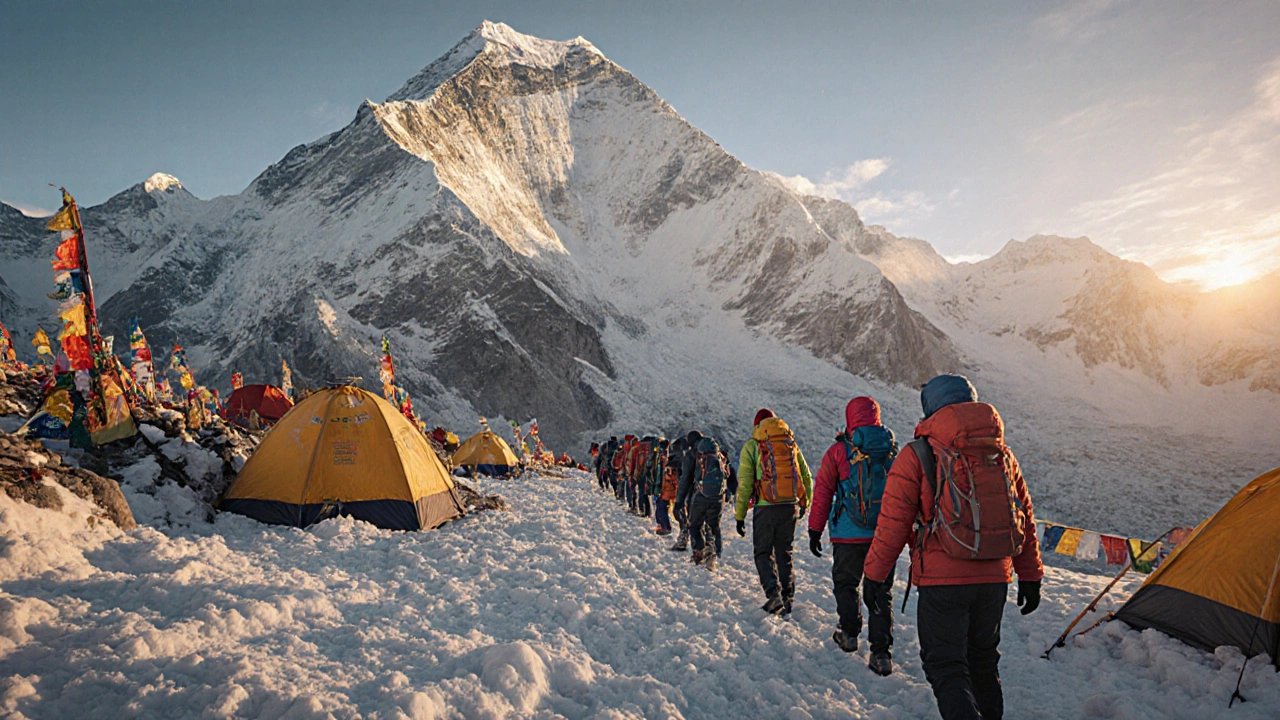SEARCH
Everest Base Camp Cost: What to Expect When Planning Your Trek
Everest Base Camp Cost the total amount you need to spend to reach the base of the world’s highest peak EBC budget Everest Base Camp Cost includes a handful of clear pieces: the permit you need to walk in Nepal, the travel to the trailhead, the nights you spend in teahouses, and the gear that keeps you safe at 5,364 meters. It’s not a mystery fee you discover midway; it is a set of predictable items that you can add up before you even lace your boots. For example, the Everest Base Camp Trek, a 12‑day round‑trip, typically requires the Trekkers' Information Management System (TIMS) card and a Sagarmatha National Park permit. Those two documents together form the permit backbone of the budget. In plain terms, the cost of the trek encompasses the permit fees, the travel logistics, and the day‑to‑day expenses on the mountain. Knowing that structure lets you plan without surprise.
Breakdown of the Main Cost Elements
The biggest line item is usually Trekking Permits, which cost about US$30 for the park entry and US$20 for the TIMS card per person. Add to that the internal flights from Kathmandu to Lukla – the gateway to the Himalayas – which hover around US$150–$200 depending on the season. Once you’re on the trail, accommodation is a mix of basic teahouses and occasional private rooms; expect to pay US$10–$15 per night for a dormitory style room and up to US$30 for a private space. Food follows a similar pattern: a simple dal‑bhat plate is about US$5, while western‑style meals can reach US$12.
Gear and equipment are another vital chunk. A good down jacket, insulated sleeping bag, and sturdy trekking boots can cost anywhere from US$200 to $500, but renting reduces the upfront hit to roughly US$50–$80 for a full set. The final piece many trekkers overlook is Sherpa Services, which cover porter fees, guide salaries, and sometimes oxygen cylinder rentals for higher altitude days. A certified guide typically earns US$25–$30 per day, while a porter costs about US$15–$20 per day. If you hire an oxygen cylinder for an emergency or extra push, budget an extra US$30–$40.
Putting all those numbers together gives a realistic range: a low‑budget solo trek can be done for around US$1,200, while a more comfortable experience with private rooms, a guide, and better gear lands near US$2,000. The exact total depends on the season, personal comfort choices, and how much you choose to outsource versus carry yourself. The good news is that each category is transparent, so you can cut costs where you feel comfortable and splurge where you need safety or comfort.
Below you’ll find a curated set of articles that dig deeper into each of these cost components. Whether you want a step‑by‑step permit guide, detailed gear rental lists, or strategies to save on flights and accommodation, the collection has you covered. Dive in to see how each piece fits into the bigger picture of planning a successful Everest Base Camp adventure.

Mount Everest Trek Cost 2025: Complete Budget Guide
Discover the full cost of a Mount Everest trek in 2025, broken down by permits, gear, guides, and hidden fees. Learn budgeting tips, agency selection, and budget vs luxury options.
Continue reading